The Baltia moon system
Table of contents
Temi
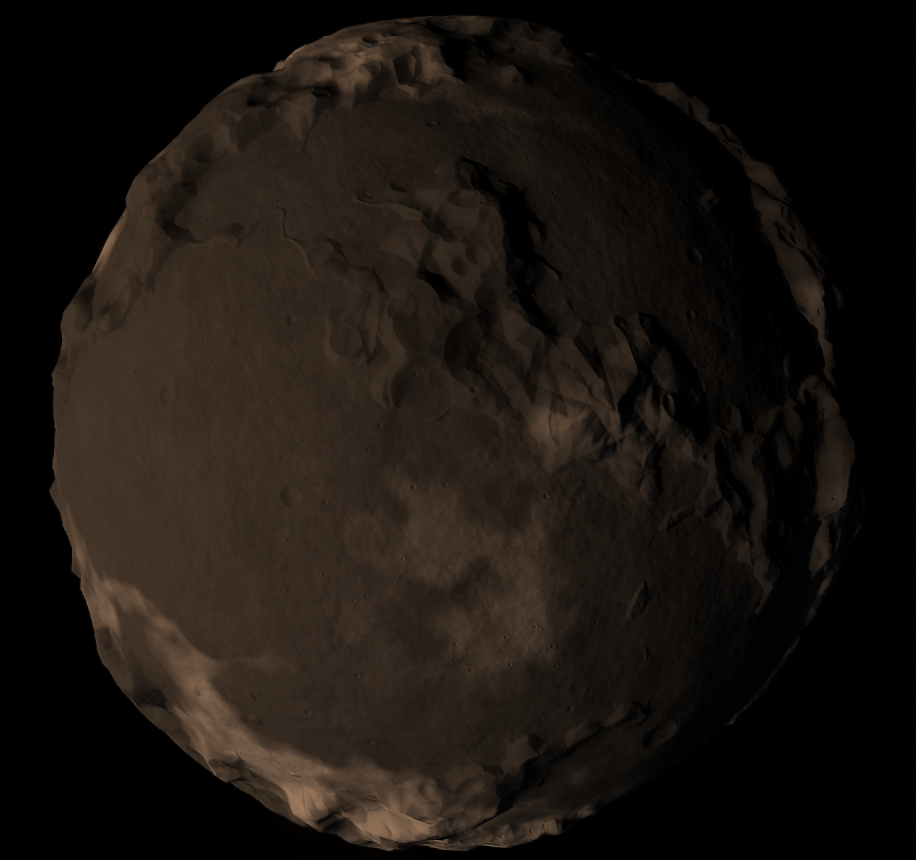
Temi as seen from space
Mass |
6.741E21 kg (0.091 times Moon’s) |
|---|---|
Radius |
726.96 km (0.418 times Moon’s) |
Gravity |
0.086 g |
Rotation period |
Tidally locked |
Semi-Major Axis |
1.991E8 km |
|---|---|
Inclination |
0° |
Eccentricity |
0.0102 |
Argument of Periapsis |
306.6 |
Period |
15 h, 9 m, 8 s |
Temi is a moon with quite an unusual shape, having very pronounced and “sharp” lines of mountains along its surface. As is expected for a gas giant moon, it is tidally locked to Baltia, and forms orbital resonances with its neighboring moons.
`
My N-Body simulation method makes a return here! We’re back to ultra realistic orbits. Honestly, I don’t know what I did to make Temi’s surface look the way it does. I think its actually a bug in my noise map generator code that causes it to look so funky.
`
Aldor
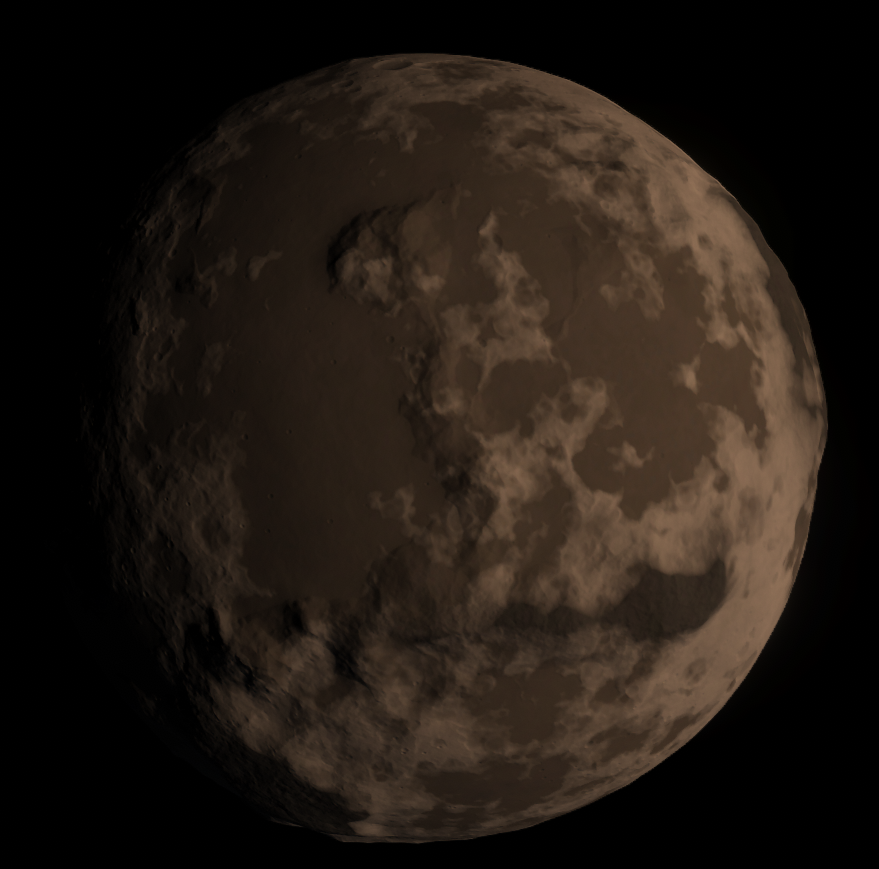
Aldor as seen from space
Mass |
1.079E23 kg (1.46 times Moon’s) |
|---|---|
Radius |
1,870 km (1.07 times Moon’s) |
Gravity |
0.21 g |
Rotation period |
Tidally locked |
Semi-Major Axis |
2.996E8 km |
|---|---|
Inclination |
0° |
Eccentricity |
0.0059 |
Longitude of Ascending Node |
0° |
Period |
27 h, 58 m, 14 s |
Aldor is mostly a regular-looking moon, although it is strange that craters are only visible on the regions made out of a brighter looking rock, suggesting active geological processes on only some parts of its surface.
`
Generic moon is generic!
`
Copal

Copal as seen from space
Mass |
2.912E23 kg (3.96 times Moon’s) |
|---|---|
Radius |
1,787.68 km (1.02 times Moon’s) |
Gravity |
0.62 g |
Rotation period |
Tidally locked |
Semi-Major Axis |
4.75E8 km |
|---|---|
Inclination |
0° |
Eccentricity |
0.00424 |
Argument of Periapsis |
301.51 |
Period |
2 d, 7 h, 49 m |
Copal is an exceptionally “red” moon. Its surface is covered in thick tholin deposits and copper minerals, giving it a very strong red coloration all over. Its surface is also extremely rough, with many small peaks in the terrain making it highly difficult to navigate.
`
R E D ! I have no Idea why I didn’t have the Idea before this of creating a celestial body that was absolutely covered in tholins, especially with how common they are. The reddish light from Amber Light only intensifies the look!
`
Fol

Fol as seen from space
Mass |
2.062E23 kg (2.806 times Moon’s) |
|---|---|
Radius |
2,470 km (1.42 times Moon’s) |
Gravity |
0.23 g |
Avg. Surface Temp |
263 K (-10.15 °C) |
Atmos. pressure at datum |
0.0621 atm |
Rotation period |
Tidally locked |
Semi-Major Axis |
6.465E8 km |
|---|---|
Inclination |
0° |
Eccentricity |
0.00763 |
Argument of Periapsis |
218.37° |
Period |
3 d, 16 h, 38 m |
Fol is the largest moon of Baltia, and the only with an atmosphere, though a thin one, which consists almost entirely of CO2, with a little bit of Nitrogen. It has an abudance of cryovolcanoes on its surface, which are easily visible from space. The surface itself consists partially of large ice sheet, which can be seen with large cracks in them.
Its temperature is at the very upper end of Avali habitability, and the gravity is perfect, but atmospheric pressure way too low. Still, it makes the best place for Avali to stay at in the whole Amber Light system.
`
Enceladus, but it has an atmosphere! I do like to imagine Avali living there, or maybe in a space station orbiting the gas giant?
`
Pandunia

Pandunia as seen from space
Mass |
1.821E22 (0.24 times Moon’s) |
|---|---|
Radius |
1,173 km (0.67 times Moon’s) |
Gravity |
0.09 g |
Rotation period |
Tidally locked |
Semi-Major Axis |
8.465E8 km |
|---|---|
Inclination |
0° |
Eccentricity |
0.00861 |
Argument of Periapsis |
133.8309° |
Period |
5 d, 12 h, 47 m |
Pandunia has a very similar coloration to Copal, although its surface is a lot more cratered.
`
Don’t really got anything to say for this one, except that I really should’ve re-done it before release. It deserved more attention from me.
`
Onuk
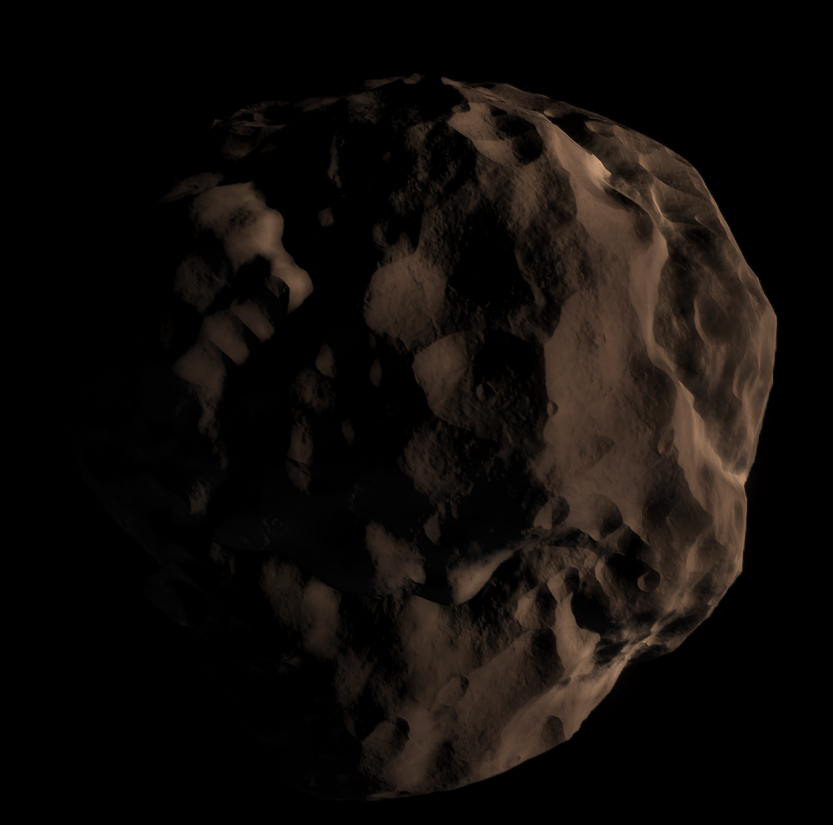
Onuk as seen from space
Mass |
5.2E18 kg |
|---|---|
Radius |
68.9 km |
Gravity |
0.007 g |
Rotation period |
27 h |
Semi-Major Axis |
3.33E9 km |
|---|---|
Inclination |
33.8° |
Longitude of Ascending Node |
-22° |
Eccentricity |
0.17 |
Argument of Periapsis |
333° |
Period |
43 d, 4 h, 6 m |
Onuk is the first of three minor moons of the Baltia system that are of particular interest to Avali astronomers. This one holds the record for the largest in median diameter of all the minor moons measured so far.
`
I enjoy how this one’s coloration and shape make it look like someone blew a chunk out of Temi.
`
Ambar
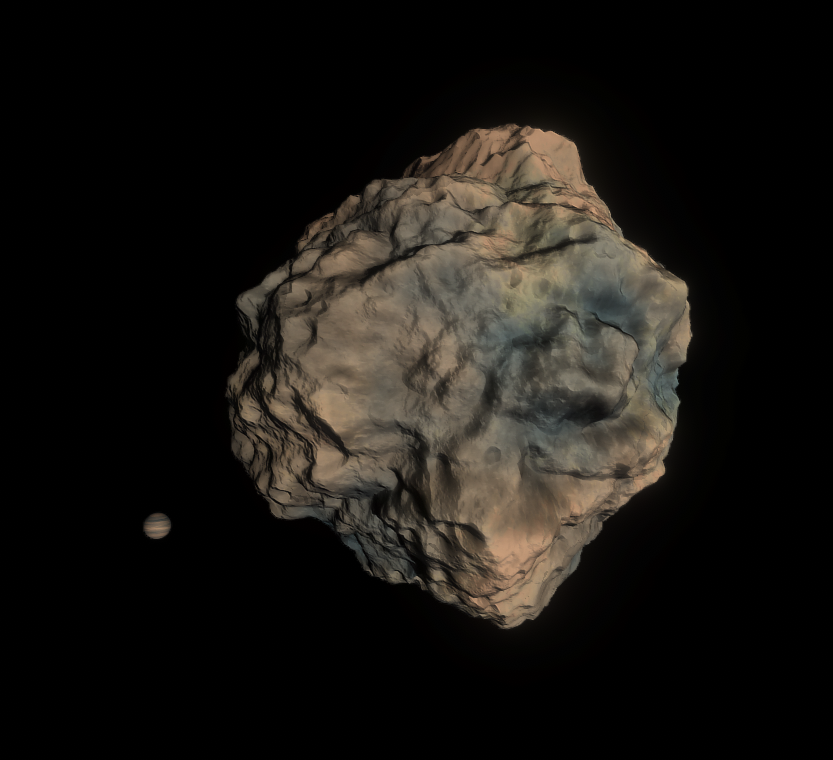
Ambar as seen from space
Mass |
1.5E17 kg |
|---|---|
Radius |
17.3 km |
Gravity |
0.0034 g |
Rotation period |
33 h, 26 m, 18 s |
Semi-Major Axis |
6.122E9 km |
|---|---|
Inclination |
-148° |
Longitude of Ascending Node |
101° |
Eccentricity |
0.222 |
Argument of Periapsis |
33° |
Period |
107 d, 14 h, 43 m |
Ambar has a very unique combination of metal salts in its crust, making it a chemical anomaly. Although it is expected to have been captured by Baltia at some point, as with most minor moons, it is also unclear where else it could’ve come from to give it such a unique chemical composition. Said composition is also responsible for spots on its surface to be colored blue so strongly, the color shines even underneath Amber Light’s orange light.
`
I actually think this minor moon is quite unique in appearance. The shape is very spiky, and getting the blue color to pop under these lighting conditions was a challenge.
`
Nik
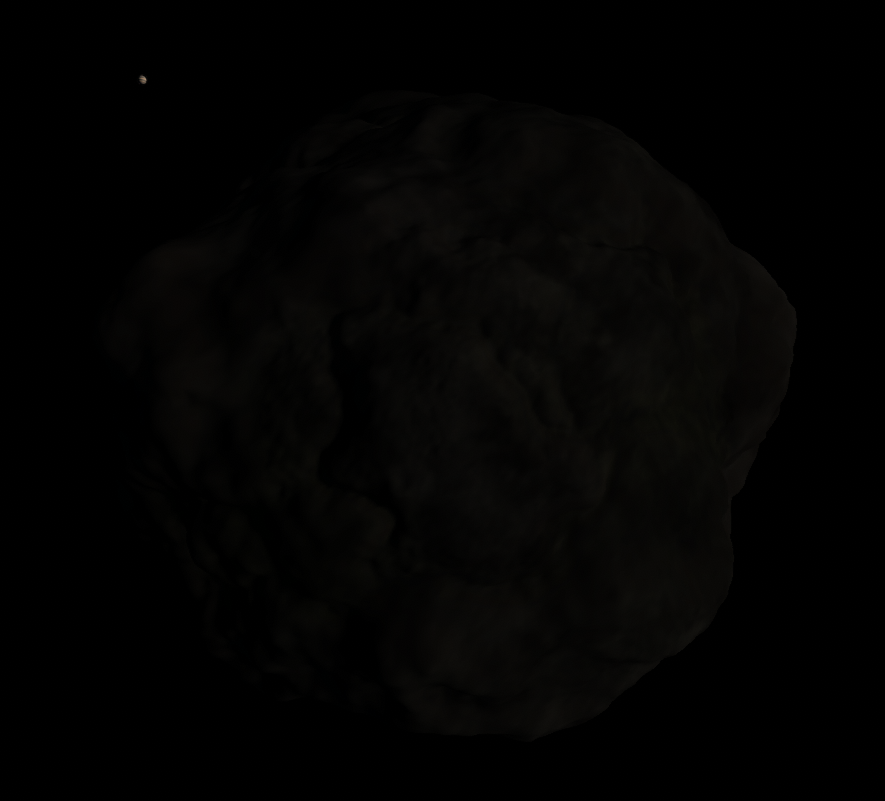
Nik as seen from space, Baltia barely visible in the background
Mass |
1.05E18 kg |
|---|---|
Radius |
38.4 km |
Gravity |
0.0048 g |
Rotation period |
15 h, 29 m, 28 s |
Semi-Major Axis |
1.88E10 km |
|---|---|
Inclination |
-56° |
Longitude of Ascending Node |
69° |
Eccentricity |
0.12 |
Argument of Periapsis |
55° |
Period |
1 y, 7 M, 0 d |
Nik is one of the furthest out minor moons of Baltia. Orbits farther away become gradually more unstable due to the gravitational influence of Goda. Its surface is also very dark, to the point where its discovery was almost an accident. This coloration combined with its high orbit make it stand out.
`
Very hard to spot asteroid! That it is THIS dark was actually unintentional, but ends up looking very nice in KSP. Its almost like a shadow against the bright skybox (a skybox which I removed for taking pictures for the wiki, to keep the focus on the celestial bodies).
`
Goda

Goda as seen from space
Mass |
1.497E22 kg (0.2 times Moon’s) |
|---|---|
Radius |
1,198.62 km (0.68 times Moon’s) |
Gravity |
0.07 g |
Rotation period |
37 h, 26 m, 18 s |
Semi-Major Axis |
3.7E10 km |
|---|---|
Inclination |
22.3° |
Longitude of Ascending Node |
10° |
Eccentricity |
0.15 |
Argument of Periapsis |
100° |
Period |
4 y, 4 M, 16 d |
Goda is a very unusual moon of Baltia. Its size and mass put it firmly in the category of major moon, as it is hydrostatically stable, but its orbit is very unusual: high, inclined and eccentric. Its gravitational influence also appears to be the reason that the outer edges of Baltia’s minor moon system is in disarray, but this influence appears to have been recent. All this suggest’s Baltia managed to capture itself a whole major moon in the form of Goda.
`
I’ve never heard of a major moon in this kind of an orbit before, so I knew I had to do it. I also quite like the Idea of a gas giant just casually joinking itself a whole dwarf planet. This one is also related to that Planet 9 mod I mentioned in Fern’s note. Goda here was actually one of the outputs I got when I play-tested that pack. I really like the way its surface looks when landed, so I moved it to this pack with no modifications. Some other names (but not specific maps) from the Planet 9 pack make a re-appearance here, specifically Temi and Fol.
`